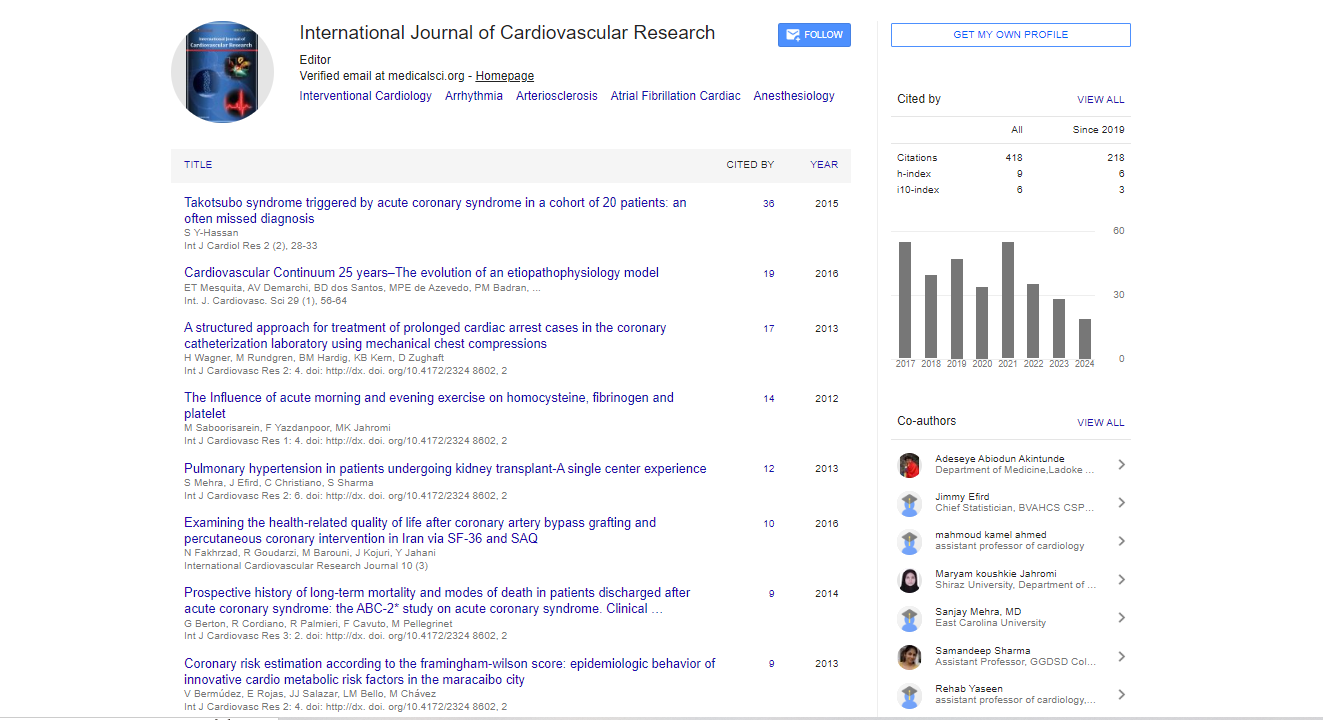Research Article, Int J Cardiovas Res Vol: 6 Issue: 3
Factors Associated with adherence to Warfarin among atrial Fibrillation Patients and its Impact on Anticoagulation Control
Khaldoon Mahmoud Radaideh1* and Laila Mahmoud Matalqah2
1Radiologic Technology Department, College of Applied Medical Sciences, Al- Qassim University, Saudi Arabia
2Department of pharmacology, Faculty of Medicine, Yarmouk University, Jordan
*Corresponding Author : Khaldoon Mahmoud Radaideh
Radiologic Technology Department, College of Applied Medical Sciences, Al-Qassim University, Saudi Arabia
Tel: 00966547332755
E-mail: khaldoonmah1@yahoo.com
Received: February 01, 2017 Accepted: March 21, 2017 Published: March 29, 2017
Citation: Radaideh KM, Matalqah LM (2017) Factors Associated with adherence to Warfarin among atrial Fibrillation Patients and its Impact on Anticoagulation Control. Int J Cardiovasc Res 6:3. doi: 10.4172/2324-8602.1000309
Abstract
Introduction: Adherence to warfarin therapy remains an important factor in reducing the risk of stroke among atrial fibrillation patients. The aim of this study was to examine factors associated with nonadherence to warfarin and its impact on anticoagulation control (INR). Material and Methods: A cross sectional study was conducted at Cardiology Clinic and Anticoagulation Clinics at two tertiary hospitals. Adherence was assessed using the English version of Morisky Medication Adherence Scale (MMAS-8) and the Malay version (MMAS-BM). Level of adherence were categorized as low (score<6) medium (6<score<8) and high (score=8). The Oral Anticoagulation Knowledge instrument (OAK test) was used to evaluate patients’ anticoagulation knowledge. INR control was calculated using Rosendaal method and expressed by time in the therapeutic range (TTR) and good INR control was defined as TTR ≥ 75%. Results: A total of 339 AF patients with a mean age ± SD of 60.4 ± 14.5 years were recruited. Among all 164 (48.4%) appeared to be high adherent to warfarin. The study population showed an overall poor anticoagulation control with mean ± SD of TTR% of 0.55 ± 0.25, and only 90 (26.5%) had an acceptable INR control (TTR ≥ 75%). In the multivariate analysis only older age (above 65 years old) (OR 3.326), high medication knowledge scores (OAK score ≥ 75%)) (OR 3.231,) and the presence of other comorbidities (OR 2.376) were significantly associated with high adherence level (score=8). No significant association was found between patients’ adherence and the anticoagulation control, with only 49 (29.9%) patients of high adherent group (n=164) had contributed to good anticoagulation control (n=90). Conclusions: Adherence to medications in AF patients remains unsatisfactory and more efforts must be made to improve adherence to warfarin.
 Spanish
Spanish  Chinese
Chinese  Russian
Russian  German
German  French
French  Japanese
Japanese  Portuguese
Portuguese  Hindi
Hindi 



